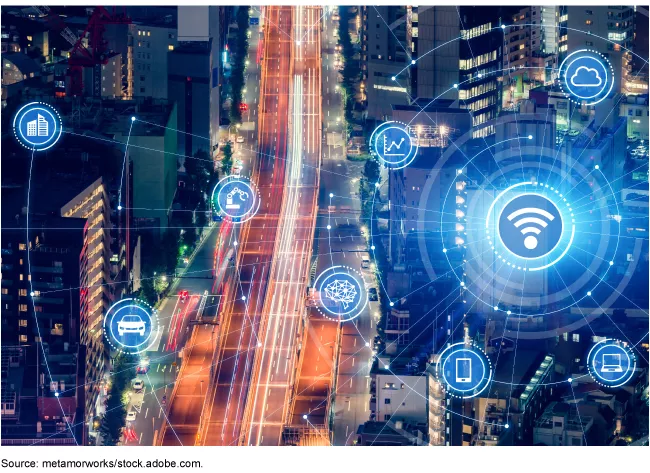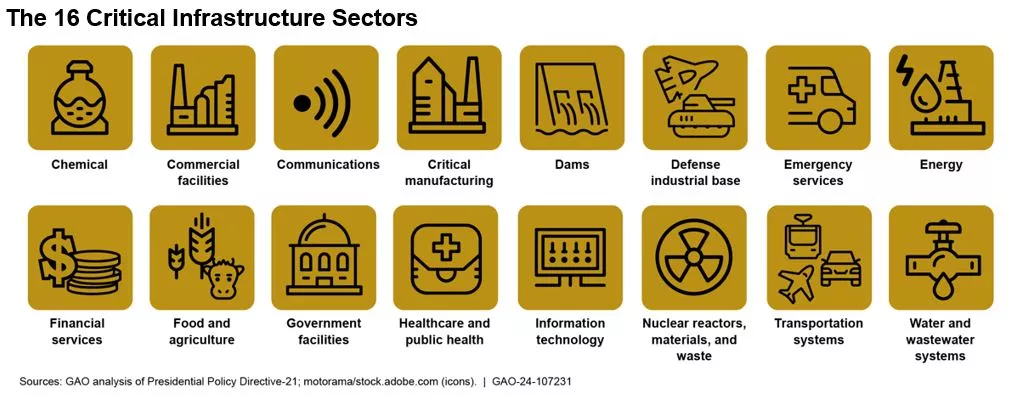CrowdStrike Chaos Highlights Key Cyber Vulnerabilities with Software Updates
Earlier this month, a software update from the cybersecurity firm CrowdStrike caused Microsoft Windows operating systems to crash—resulting in potentially the largest IT outage in history.
Disruptions were widespread. Around the world, businesses and services were unable to operate as computers crashed, and some critical infrastructure sectors (like transportation, healthcare, and finance) were disrupted. For example, commercial flights were grounded, critical hospital care was interrupted, and financial institutions were unable to service clients.
Here at GAO, we have long highlighted concerns for Congress about IT vulnerabilities, a lack of security awareness, poor cyber hygiene, and a need for more cyber preventative measures to combat disruptions like the CrowdStrike outage. In our prior work, we have identified risks to the nation’s critical infrastructure sectors and in the supply chain of software supporting IT systems.
Today’s WatchBlog post looks at this work, including our June update to the High Risk List.
Image

CrowdStrike crash caused by supply chain vulnerability similar to SolarWinds attack
So far, what we know about the CrowdStrike crash is that it was caused by human error and not a cyberattack or malicious intent. But the crash highlights the same vulnerabilities we saw during the SolarWinds attack in 2019. Instead of attacking systems directly, malicious actors targeted the software used to support them.
SolarWinds attack. Beginning in September 2019, the Russian Foreign Intelligence Service led a campaign of cyberattacks, breaking into the computing networks of SolarWinds—a Texas-based network management software company. The software was widely used by the federal government to monitor activities and manage devices on federal networks.
Hackers injected trojanized (hidden) code into verified SolarWinds software updates. When SolarWinds released the software updates to its customers, the threat actor gained a “backdoor,” or remote access, to customers’ networks and systems. The attack was discovered more than a year later in November 2020.
We provide a timeline of these attacks and the response in our April 2021 blog post.
Protecting the software supply chain. As we saw with CrowdStrike and SolarWinds, faulty or manipulated software updates can have cascading, widespread impacts on IT systems.
In our prior work, we’ve identified 7 practices to manage and protect federal IT against these risks. But when we looked at how agencies (23 of them) implemented these practices, we found that few had. Learn more by listening to our podcast with GAO’s Carol Harris about supply chain risks.
Many manufacturers of IT products and services are located overseas, which also creates vulnerabilities for the United States. The federal government needs to take action to better monitor the global supply chain against emerging threats. These threats include those against the Department of Defense, which we reported on in May 2023.
Cybersecurity issues like these are High Risk. Here’s what needs to happen
Malicious cyberattacks on the federal government and the nation’s critical infrastructures—like that on SolarWinds, and others—are growing in number, impact, and sophistication. This issue is so significant that in June, we updated our High Risk designation for cybersecurity. This update includes descriptions of the major challenges facing the federal government in its efforts to protect against attacks. Some of these challenges are related to the vulnerabilities seen during the CrowdStrike and SolarWinds software updates and responses.
National Cybersecurity Strategy. Last year, the White House issued a National Cybersecurity Strategy outlining steps the government is taking to address the longstanding cybersecurity challenges facing the country. But when we looked at the strategy, we found it needed outcome-oriented performance measures for its various initiatives.
In addition, the federal government needs to take action to ensure it is monitoring the global supply chain, confirm it has the highly skilled cyber workforce it needs, and address risks associated with emerging technologies—such as artificial intelligence.
We’ve made nearly 400 recommendations to strengthen the National Cybersecurity Strategy and agencies’ ability to perform effective oversight. As of May, 170 of our recommendations have not been acted on.
Critical infrastructure sectors remain vulnerable. Attacks on critical infrastructure sectors continue to grow and could seriously harm human safety, national security, the environment, and the economy. For example, a February attack on Change Healthcare (a health payment processor) resulted in nearly $874 million in financial loses and widespread disruptions for providers and patient care. Healthcare is just one of the 16 critical infrastructure sectors that are vulnerable to cyberattacks. All of these sectors rely heavily on IT systems to operate.
Image

The federal government has taken some steps to address the challenges with protecting these systems from cyberattacks. But we see persistent shortcomings in these efforts. We’ve made 126 recommendations to better protect the cybersecurity of critical infrastructure. Action is still needed on 64 of them.
Learn more about our work on federal cybersecurity and critical infrastructure protection by reading our June High Risk update report.
- GAO’s fact-based, nonpartisan information helps Congress and federal agencies improve government. The WatchBlog lets us contextualize GAO’s work a little more for the public. Check out more of our posts at GAO.gov/blog.





